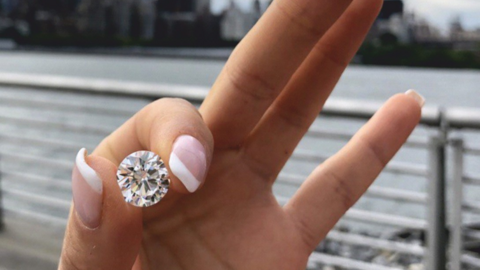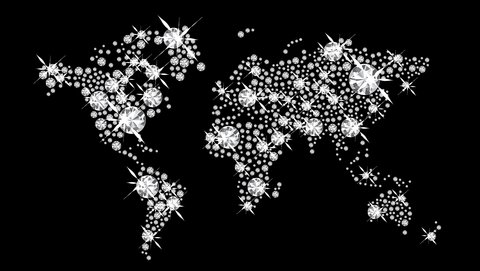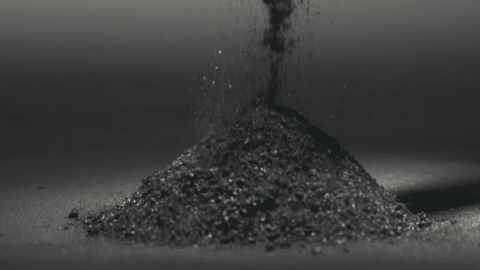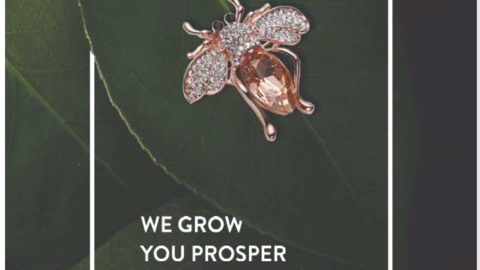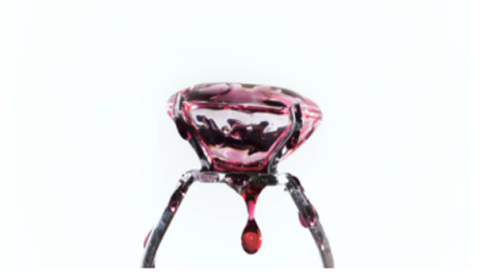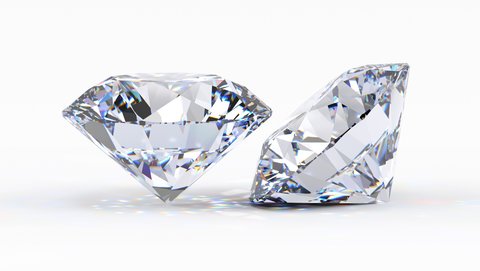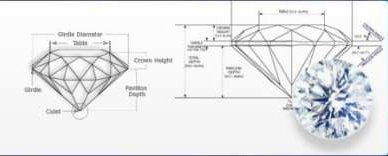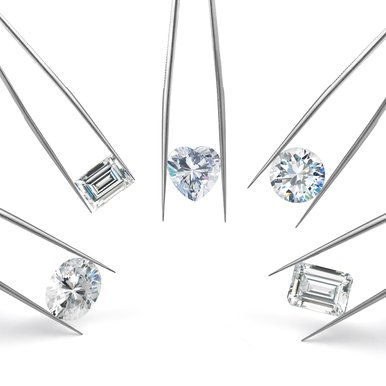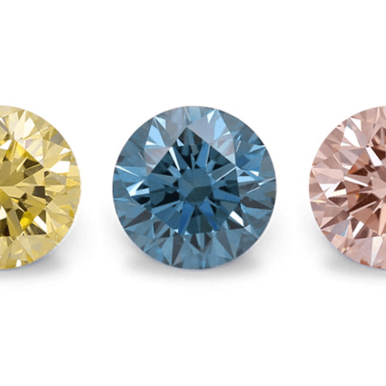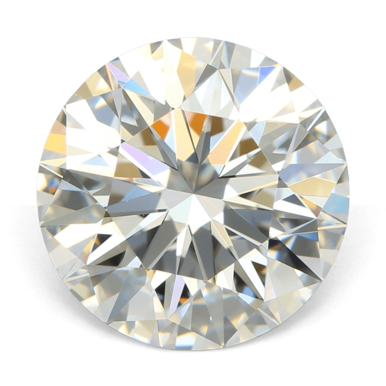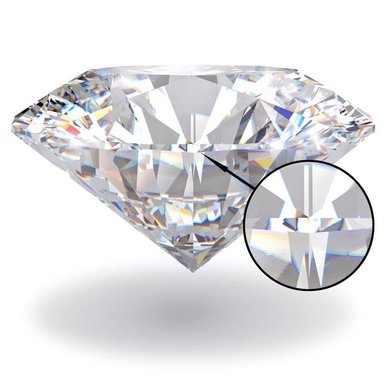The Ultimate Guide to E Color Lab-Grown Diamonds: Exceptional Brilliance at a Smart Price
E Color Lab Grown Diamonds
E color diamonds represent the pinnacle of luxury and brilliance in the diamond world, sitting at the prestigious second position on the Gemological Institute of America's (GIA) color grading scale. These exceptional gems are classified as completely colorless to the naked eye, making them among the most sought-after diamonds for discerning buyers who demand exceptional quality without compromise.
What makes E color diamonds special is their remarkable rarity and pristine appearance. While D color diamonds occupy the top spot, E color diamonds offer virtually indistinguishable colorlessness at a slightly more accessible price point. These gems possess the extraordinary optical properties that only truly colorless diamonds can exhibit, creating a dazzling play of light that captivates the eye and elevates any jewelry design.
For buyers seeking lab-grown diamonds with uncompromising quality, E color represents the sweet spot of value and brilliance – a perfect choice for those who appreciate exceptional quality and sustainable luxury.
Understanding Diamond Color and the GIA Scale
When assessing a diamond's quality, color (or rather, the absence of it) is one of the four critical factors that determine its value and beauty. The Gemological Institute of America (GIA) has established the most widely recognized diamond color grading system, which ranges from D (completely colorless) to Z (light yellow or brown).
Within this spectrum, E color diamonds fall in the prestigious "colorless" category, which includes only three grades: D, E, and F. These colorless diamonds are exceptionally rare and prized for their optical purity. The differences between these top grades are so subtle that even trained gemologists need controlled conditions and comparison stones to distinguish between them accurately.
Diamond color grading is conducted under specific controlled lighting conditions, with diamonds placed face-down against a white background and compared to master stones of known color grades. This precise methodology ensures consistency and accuracy in grading. The assessment focuses on the body color of the diamond, not the flashes of rainbow colors (known as fire) that result from a diamond's dispersion of light.
For the average consumer, the difference between D and E color diamonds is virtually imperceptible. Both appear brilliantly white and colorless, even under magnification. It's only when expert gemologists examine these diamonds side by side under controlled lighting that the minute differences become detectable.
In lab-grown diamonds, achieving E color perfection demonstrates the remarkable technological advancement in diamond creation, as producing completely colorless lab diamonds requires precise control of growth conditions and materials.
GIA Diamond Color Scale
Unique Qualities of E Color Diamonds
E color diamonds possess exceptional qualities that set them apart in the world of luxury gemstones, making them a coveted choice for discerning buyers and investors alike.
Their most distinctive characteristic is their near-absolute colorlessness. An E color diamond contains only minute traces of color detectable exclusively by diamond experts using specialized equipment and comparison stones. To the naked eye—even under close inspection—these diamonds appear perfectly white and colorless, exhibiting a purity that creates unparalleled visual impact.
This exceptional colorlessness directly contributes to another key quality: extraordinary brilliance and light performance. Without color to absorb light, E color diamonds maximize light return, creating that coveted sparkle and fire that defines a truly exceptional diamond. Light passes through the crystal structure unimpeded by color molecules, resulting in optimum reflection, refraction, and dispersion—the optical properties that give diamonds their magical appearance.
E color diamonds are also prized for their rarity. While not quite as rare as D color diamonds, they represent a tiny percentage of all diamonds mined or created in laboratories worldwide. This scarcity adds to their prestige and makes them highly sought after by collectors and connoisseurs.
For lab-grown diamonds specifically, achieving E color perfection is a testament to technological mastery. Creating a genuinely colorless lab diamond requires precise control of growth conditions, careful selection of source materials, and meticulous post-growth treatments. When you choose a lab-grown E color diamond, you're acquiring a gem that represents the pinnacle of diamond-growing technology.
Beyond aesthetics and rarity, E color diamonds carry significant investment appeal. Considered "collection grade," these diamonds tend to maintain strong value over time due to their consistent demand and limited supply. For those seeking both beauty and long-term value, E color lab-grown diamonds offer a compelling combination of quality and responsible sourcing.
The aesthetic purity of E color diamonds also provides remarkable versatility in jewelry design. Their colorless nature allows them to pair beautifully with any metal color and complement any gemstone, making them ideal center stones for signature pieces that will remain timeless for generations.
E Color vs Other Diamond Colors (D, F, G, H, etc.)
Understanding how E color diamonds compare to other color grades helps buyers make informed decisions based on their priorities and budget. These comparisons reveal why E color is often considered the optimal balance between perfection and value.
E vs D Color Diamonds
D color diamonds sit at the absolute pinnacle of the color scale as the most colorless grade available. When comparing E to D:
- Visual Differences: Even to trained gemologists, the difference is extremely subtle. To the naked eye, they appear identical.
- Price Difference: D diamonds typically command a 10-15% premium over E diamonds, despite the imperceptible difference in appearance.
- Value Proposition: Many experts consider E color the smarter purchase, offering identical visual performance with significant cost savings.
E vs F Color Diamonds
F color diamonds represent the final grade in the "colorless" category:
- Appearance: All three colorless grades (D, E, F) look virtually identical without specialized equipment for comparison.
- Price Consideration: E diamonds typically cost about 5-8% more than F diamonds.
- Selection Rationale: For those seeking the prestige of the higher colorless grades while exercising some price sensitivity, F color offers an excellent alternative to E.
E vs G, H Colors (Near-Colorless)
Moving to the near-colorless category reveals more noticeable differences:
- Visual Distinction: G and H diamonds begin to show very slight traces of warmth or yellow tint, particularly when viewed from the side or in comparison to colorless diamonds.
- Setting Impact: In white gold or platinum settings, this slight warmth becomes more noticeable when compared to E color diamonds.
- Price Advantage: G color diamonds typically cost 15-20% less than E color diamonds, while H colors may be 25-30% less expensive.
- Size Considerations: The color difference becomes more apparent in larger diamonds (over 1.5 carats), making the upgrade to E more valuable for significant stones.
E vs I, J and Lower Grades
With I, J, and lower colors, the differences become progressively more apparent:
- Visible Color: These diamonds display noticeable warmth visible to the untrained eye, particularly in larger stones.
- Setting Choices: Lower color grades often look better in yellow or rose gold settings, which complement their warmer tones.
- Price Difference: I and J diamonds can cost 40-50% less than comparable E color diamonds.
- Light Performance: The color absorption in these warmer diamonds slightly reduces their brilliance compared to E color diamonds.
E Color vs Other Diamond Colors - Comparison
| Color Grade | Category | Visible Color | Price vs E | Best For | Visual Appearance |
|---|---|---|---|---|---|
| D | Colorless | None | +10-15% | Absolute perfectionists | Perfectly colorless, indistinguishable from E to naked eye |
| E | Colorless | None | Baseline | High-quality value seekers | Perfectly colorless to naked eye, exceptional brilliance |
| F | Colorless | None | -5-8% | Smart colorless alternative | Colorless to naked eye, excellent brilliance |
| G | Near-Colorless | Trace | -15-20% | Excellent balance option | Nearly colorless, slight warmth detectable by experts |
| H | Near-Colorless | Slight | -25-30% | Value-conscious buyers | Slight warmth visible from side angles |
| I | Near-Colorless | Noticeable | -35-45% | Budget-focused buyers | Noticeable warmth, especially in larger stones |
| J | Near-Colorless | Easily visible | -45-55% | Yellow/rose gold settings | Distinct warm tint, complemented by warm metal settings |
For lab-grown diamonds specifically, these price differences maintain similar proportions, though at significantly lower absolute price points than natural diamonds. This makes the exceptional quality of E color much more accessible in lab-grown options, allowing buyers to prioritize color excellence without extreme budget constraints.
When seeking the ideal balance between perfection and value, E color lab-grown diamonds offer exceptional brilliance and prestige while providing measurable savings compared to D color alternatives.
Price, Value, and Investment Potential
Understanding the financial aspects of E color lab-grown diamonds helps buyers make informed decisions about their investment in fine jewelry. This analysis covers pricing factors, comparative value, and long-term considerations.
Price Comparison
E color lab-grown diamonds typically offer exceptional value compared to their natural counterparts:
- Natural vs Lab-Grown: E color lab-grown diamonds generally cost 50-70% less than natural diamonds of equivalent color, clarity, and carat weight.
- Price Premium Within Lab-Grown: Compared to other lab-grown color grades, E color commands a premium of approximately:
- 10-15% higher than F color
- 20-25% higher than G color
- 35-40% higher than H color
For a standard 1-carat, VS1 clarity, excellent cut lab-grown diamond, approximate price ranges (as of 2025) are:
- E color: $1,100-$1,500
- D color: $1,400-$1,800
- F color: $1,000-$1,200
- G color: $800-$1,000
This pricing structure makes E color an attractive option for those seeking colorless quality without the extreme premium of D color.
Lab-Grown D Color Diamonds Collection
| SHAPE | CARAT | CUT | COLOR | CLARITY |
|---|
Register on our website to gain access to our complete diamond database.
Sign upValue Considerations
Several factors influence the value proposition of E color lab-grown diamonds:
- Visual Return on Investment: Unlike the imperceptible difference between D and E, the step down from E to G shows noticeable differences in colorlessness, making the E color premium more justifiable for discerning buyers.
- Size Impact: The value of E color becomes more pronounced in larger stones (over 1.5 carats), where color differences are more visible and affect the overall appearance more significantly.
- Setting Efficiency: When set in white metals (platinum, white gold), E color diamonds maximize the investment in the setting by providing optimal visual impact.
Long-Term Investment Potential
While all diamond purchases should be considered primarily as jewelry rather than financial instruments, E color lab-grown diamonds offer certain advantages:
- Stability: Higher color grades tend to maintain stronger demand over time compared to lower grades.
- Technological Considerations: As lab-grown diamond technology evolves, the ability to consistently produce perfectly colorless diamonds remains challenging, helping maintain the relative scarcity of E color lab-grown diamonds.
- Market Positioning: E color lab-grown diamonds occupy a premium segment that appeals to quality-conscious consumers, a market segment that has shown consistent growth.
Is E Color Worth the Premium?
The value equation depends on individual priorities:
- For Perfectionists Who Value Efficiency: E color offers visually imperceptible differences from D color at a measurable discount, making it the rational choice for those seeking colorless perfection.
- For Statement Pieces: Center stones, engagement rings, and significant jewelry pieces benefit most from E color's exceptional brilliance, making the premium worthwhile for milestone purchases.
- For Budget-Conscious Buyers: Those with strict budgets might consider whether allocating funds to other factors (cut quality, carat size) might yield more visible returns than the step up from F or G to E color.
Maximizing Value
To optimize the value of an E color lab-grown diamond purchase:
- Prioritize cut quality above all else, as superior cutting maximizes the benefits of the diamond's excellent color.
- Consider slightly reduced clarity (VS2 instead of VS1) before compromising on color, as certain inclusions are less noticeable than color tints.
- Choose settings that showcase and protect the investment in color, particularly platinum or premium white gold settings.
For buyers seeking exceptional quality with responsible sourcing and pricing, E color lab-grown diamonds represent one of the most compelling propositions in the luxury jewelry market today.

Choosing the Right Clarity and Cut for E Color Diamonds
To maximize the beauty and value of an E color lab-grown diamond, selecting complementary clarity grades and cut qualities is essential. These choices can either enhance or diminish the impact of the diamond's exceptional colorlessness.
Optimal Clarity Pairings
E color diamonds deserve clarity grades that preserve their exceptional light performance:
- Recommended Clarity Range: VS1 or higher is generally recommended for E color diamonds to ensure the visual purity matches the color excellence.
- VS1 and VS2: These clarity grades offer an excellent balance of value and visual perfection. Any inclusions at these grades are typically invisible to the naked eye, allowing the diamond's colorlessness to take center stage.
- VVS1 and VVS2: For those seeking near-perfection in all aspects, these higher clarity grades ensure that even under 10x magnification, inclusions remain difficult to locate, creating a diamond of exceptional purity.
- IF and FL: While these flawless and internally flawless grades represent the pinnacle of clarity, they command significant premiums that rarely translate to visible differences compared to VVS grades.
- SI1: This represents the lower threshold for E color diamonds. While still eye-clean in most cases, some SI1 inclusions might interfere with light performance, potentially undermining the benefits of the excellent color grade.
The Critical Importance of Cut Quality
The cut is unquestionably the most important quality factor for maximizing the beauty of an E color diamond:
- Cut Grade Impact: Only an Excellent or Ideal cut will fully showcase the exceptional light return that E color enables. A poorly cut E color diamond will perform worse than a well-cut G color diamond.
- Light Performance Metrics: Beyond the basic cut grade, seek diamonds with excellent scores in light performance metrics like:
- Hearts and Arrows patterns (for round brilliants)
- Optimal table and depth percentages
- Minimal fluorescence
- Excellent symmetry and polish
- Shape Considerations: While round brilliant cuts maximize light return, other shapes can highlight different aspects of E color diamonds:
- Emerald and Asscher cuts showcase the exceptional transparency and clarity
- Oval and pear shapes appear larger per carat while still displaying excellent brilliance
- Princess cuts offer modern appeal with excellent light performance
Balancing the 4Cs for Optimal Value
Finding the perfect balance between the 4Cs (Color, Clarity, Cut, and Carat) depends on personal priorities:
- Color-Focused Approach: Having committed to E color, consider maintaining VS2 clarity or better, Excellent cut, and adjusting carat size to meet budget constraints.
- Size Priority: If a larger stone is desired, consider maintaining E color and Excellent cut while accepting VS2 or even SI1 clarity (if eye-clean).
- Maximum Visual Impact: For those seeking the most visually impressive diamond, prioritize Excellent cut first, E color second, and select the largest carat size available with at least VS2 clarity.
Practical Recommendations
Based on typical budgets and priorities, these combinations offer excellent value with E color lab-grown diamonds:
- Luxury Perfection: E color, VVS2 clarity, Excellent cut, optimal proportions
- Smart Luxury: E color, VS1 clarity, Excellent cut, ideal dimensions
- Balanced Value: E color, VS2 clarity, Excellent cut, slightly adjusted proportions
- Size Maximizer: E color, SI1 clarity (eye-clean), Excellent cut, maximized carat weight
Remember that with lab-grown diamonds, these superior combinations become much more accessible, allowing a level of quality that would be prohibitively expensive with natural diamonds.
By carefully balancing these factors, buyers can create a stunning piece of jewelry that showcases the exceptional brilliance and fire that only a properly cut, colorless diamond can provide.

Best Settings and Metal Choices for E Color Diamonds
The exceptional colorlessness of an E color diamond deserves settings and metals that enhance rather than detract from its remarkable visual properties. The right choices can showcase the diamond's brilliance while the wrong ones can diminish its impact or even introduce unwanted color reflections.
Optimal Metal Choices
For E color lab-grown diamonds, certain metals create ideal surroundings:
- Platinum: The ultimate setting metal for E color diamonds due to its:
- Pure white color that complements colorless diamonds
- Density and durability that provide secure settings
- Hypoallergenic properties
- Prestigious appearance that matches the diamond's quality
- Lack of need for rhodium plating over time
- White Gold: An excellent alternative to platinum, offering:
- Bright white appearance (when rhodium-plated)
- Lower cost than platinum
- Lighter weight, which can be advantageous for larger pieces
- Regular maintenance requirement (replating every 1-2 years) to maintain its whiteness
- Metals to Avoid:
- Yellow gold can reflect yellow tints into the diamond, undermining the E color's colorlessness
- Rose gold introduces warm hues that contrast with the diamond's colorless nature
- Lower karat white golds (10K) may have a slightly warmer undertone that impacts the diamond's appearance
Ideal Setting Styles
Certain settings maximize the beauty of E color diamonds:
- Prong Settings: Minimize metal contact with the diamond, allowing maximum light entry and showcasing colorlessness
- 4-prong settings expose more of the diamond
- 6-prong settings offer greater security for larger stones
- White metal prongs prevent color contrast at diamond edges
- Solitaire Settings: Classic designs that allow the E color diamond to be the undisputed focal point
- Halo Settings: When using matching colorless accent diamonds, halos can enhance the center stone's perceived size while maintaining color consistency
- Pavé Settings: Small colorless diamonds set closely together create a continuous sparkle that complements the center E color diamond
- Channel and Bezel Settings: While secure, these settings should be chosen carefully as they increase metal contact with the diamond, potentially reducing light return
Setting Designs That Maximize Light Performance
To enhance the inherent brilliance of E color diamonds:
- Open Gallery Designs: Settings with openwork beneath the diamond maximize light entry from all angles
- Elevated Settings: Raising the diamond slightly higher allows more light to enter from below
- Minimal Metal Contact: Settings that use less metal at contact points allow more light to interact with the diamond
- Cathedral Settings: These can beautifully frame a diamond while allowing substantial light flow
Custom Considerations for Lab-Grown E Color Diamonds
Lab-grown E color diamonds offer unique opportunities in setting design:
- Value Reallocation: The savings from choosing lab-grown over natural diamonds allows investment in higher-quality platinum settings or more elaborate designs
- Matched Sets: The accessibility of precisely matched E color lab-grown diamonds makes three-stone rings, matched halos, and consistent pavé work more achievable
- Contemporary Designs: The modern, ethical appeal of lab-grown diamonds pairs beautifully with current design trends like minimalist settings, asymmetrical arrangements, and architectural influences
Setting Recommendations by Lifestyle
For those with active lifestyles:
- Lower-profile bezel settings in platinum offer maximum protection
For occasional wear:
- Elevated prong settings maximize light performance and dramatic effect
For everyday wear:
- Semi-bezel or half-bezel settings balance security and light performance
The perfect setting for an E color lab-grown diamond enhances its inherent beauty while reflecting the wearer's personal style. With thoughtful selection of both metal and design, an E color diamond becomes the centerpiece of a truly exceptional piece of jewelry that will maintain its beauty for generations.
Natural vs Lab-Grown E Color Diamonds
The choice between natural and lab-grown E color diamonds represents one of the most significant decisions for today's diamond buyers. Understanding the similarities, differences, and relative merits of each option enables informed purchasing decisions aligned with personal values and priorities.
Visual and Physical Properties
In terms of appearance and physical characteristics:
- Identical Appearance: To the naked eye—and even under standard jeweler's magnification—natural and lab-grown E color diamonds are indistinguishable. Both display the exceptional colorlessness that defines the E grade.
- Chemical Composition: Lab-grown E color diamonds have the identical carbon crystal structure as natural diamonds—they are real diamonds in every scientific sense, not simulants like cubic zirconia or moissanite.
- Growth Patterns: Extremely sophisticated gemological equipment can detect subtle growth pattern differences, but these have no impact on appearance or durability.
- Optical Properties: Both natural and lab-grown E color diamonds exhibit identical light refraction, dispersion, and brilliance when properly cut.
Price Differential
The most dramatic difference between natural and lab-grown E color diamonds is price:
- Cost Savings: Lab-grown E color diamonds typically cost 50-70% less than their natural counterparts with identical specifications.
- Practical Example: A natural 1-carat, E color, VS1 clarity, excellent cut diamond might cost $6,000-$7,500, while the lab-grown equivalent would be priced at $1,400-$1,800.
- Value Allocation: This substantial difference allows buyers to either:
- Save significantly on their diamond purchase
- Upgrade to a larger carat size or better specifications
- Invest in a more elaborate setting or complementary jewelry pieces
Environmental and Ethical Considerations
For many modern consumers, these factors significantly influence their choice:
- Environmental Impact: Lab-grown diamonds typically have a smaller carbon footprint than mined diamonds, though the exact difference depends on the energy sources used in creation.
- Land Disturbance: Lab-grown diamonds eliminate the need for mining operations that can disrupt ecosystems and require land rehabilitation.
- Supply Chain Transparency: Lab-grown diamonds offer a fully transparent origin story, eliminating concerns about potential involvement in conflict or unethical practices.
- Certification and Tracking: Both natural and lab-grown E color diamonds can be certified by major gemological laboratories, though they use separate certification systems to clearly differentiate between them.
Market Considerations
Understanding market dynamics helps buyers make informed long-term decisions:
- Resale Value: Natural E color diamonds have historically maintained stronger resale value, but this gap is stabilizing as lab-grown diamonds gain mainstream acceptance.
- Market Growth: The lab-grown diamond sector is experiencing rapid growth, with particular strength in the premium (colorless) categories like E color.
- Industry Recognition: Major jewelry retailers and luxury brands increasingly offer lab-grown diamond options, signaling their acceptance in the mainstream market.
Who Should Choose Lab-Grown E Color Diamonds?
Lab-grown E color diamonds are particularly well-suited for:
- Value-conscious buyers who prioritize quality specifications over natural origin
- Environmentally and ethically motivated consumers
- Those seeking larger stones or better specifications within a defined budget
- Fashion-forward consumers who appreciate technological innovation
- Buyers creating custom designs who can allocate more of their budget to setting craftsmanship
Who Should Choose Natural E Color Diamonds?
Natural E color diamonds remain the preference for:
- Traditional buyers who value the natural formation process
- Those viewing their purchase primarily as a long-term investment
- Collectors of rare and unique geological specimens
- Buyers for whom the natural origin carries emotional or symbolic significance
Lab-grown E color diamonds offer exquisite beauty and real diamond properties at a significantly more accessible price point, making the exceptional quality of E color available to a much broader range of consumers than ever before.
FAQ about D color Lab-Grown Diamonds
While lab-grown E color diamonds offer identical visual properties to natural ones, they typically cost 50-70% less. Their value lies in providing exceptional colorless quality at a more accessible price point rather than as financial investments. Natural E color diamonds generally maintain stronger resale value, but lab-grown diamonds offer superior initial value and identical beauty.
Without certification, it's extremely difficult to precisely identify E color. Even professional jewelers need controlled lighting, comparison stones, and specialized training to distinguish between colorless grades. The most reliable method is obtaining certification from reputable laboratories like GIA or IGI. When shopping, always request proper certification for any diamond marketed as E color.
No, lab-grown E color diamonds do not turn yellow or change color over time. Like natural diamonds, their crystal structure is stable and permanent. The exceptional colorlessness of an E grade lab-grown diamond will remain unchanged for generations. Any claims that lab-grown diamonds change color are misconceptions—both natural and lab-grown diamonds maintain their color properties indefinitely.
Emerald, Asscher, and marquise cuts tend to show diamond color more prominently due to their step-cut faceting patterns and elongated shapes. Round brilliants mask color best, making them ideal choices for maximizing the benefits of E color. If selecting fancy shapes, the investment in E color becomes more visually significant as color differences become more noticeable in these cuts.
Diamonds can appear slightly different under various lighting conditions. Fluorescent lighting may make E color diamonds appear slightly more blue-white, while incandescent lighting brings out warmer tones in all diamonds. Temperature has no impact on appearance, but environmental factors like blue or yellow surroundings can create temporary color reflections. E color diamonds maintain their exceptional appearance across most lighting environments.
Lab-grown E color diamonds typically produce up to 85% less carbon emissions than mined diamonds, require no land disruption, use significantly less water, and eliminate concerns about ecosystem damage. The controlled laboratory environment avoids the environmental uncertainties of mining operations. However, the actual environmental impact varies based on energy sources used—diamonds grown using renewable energy have the smallest carbon footprint.
Standard jeweler's equipment cannot distinguish between natural and lab-grown E color diamonds. Both have identical physical and optical properties. Specialized laboratory equipment that detects subtle growth pattern differences is required for identification. Most lab-grown diamonds are laser-inscribed with their lab-grown status on the girdle, though this microscopic inscription doesn't affect appearance or beauty.
E color lab-grown diamonds excel in custom jewelry designs due to their perfect colorlessness and significant cost advantages. The savings compared to natural diamonds allow investment in more elaborate settings, additional accent stones, or larger center stones. Their consistent quality also makes it easier to source matching stones for complex designs. Many custom jewelry designers prefer lab-grown E color diamonds for their combination of exceptional quality, ethical sourcing, and design flexibility.


